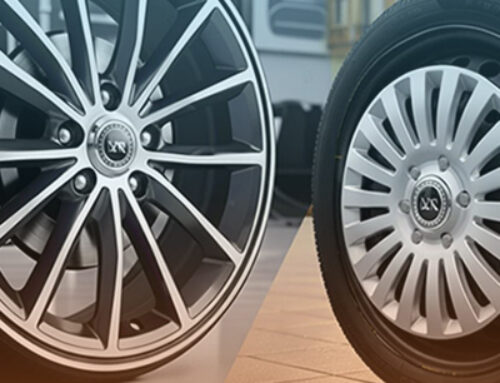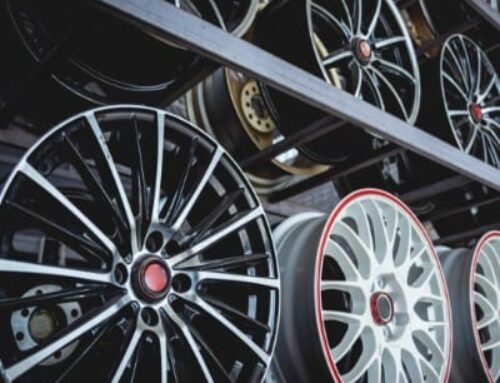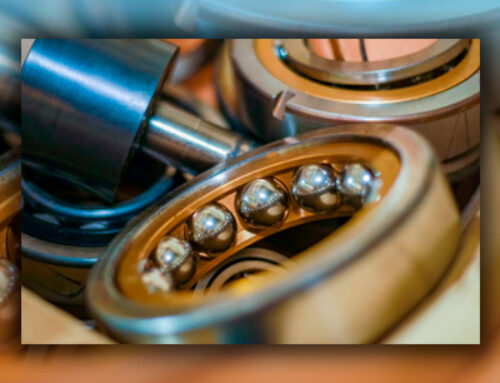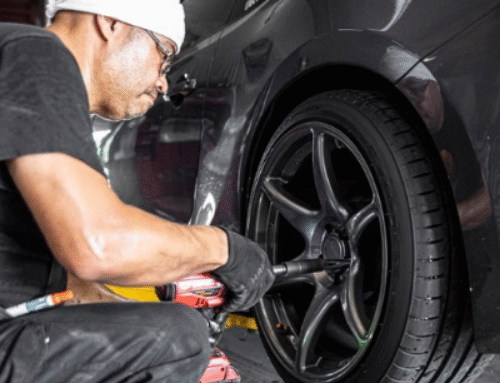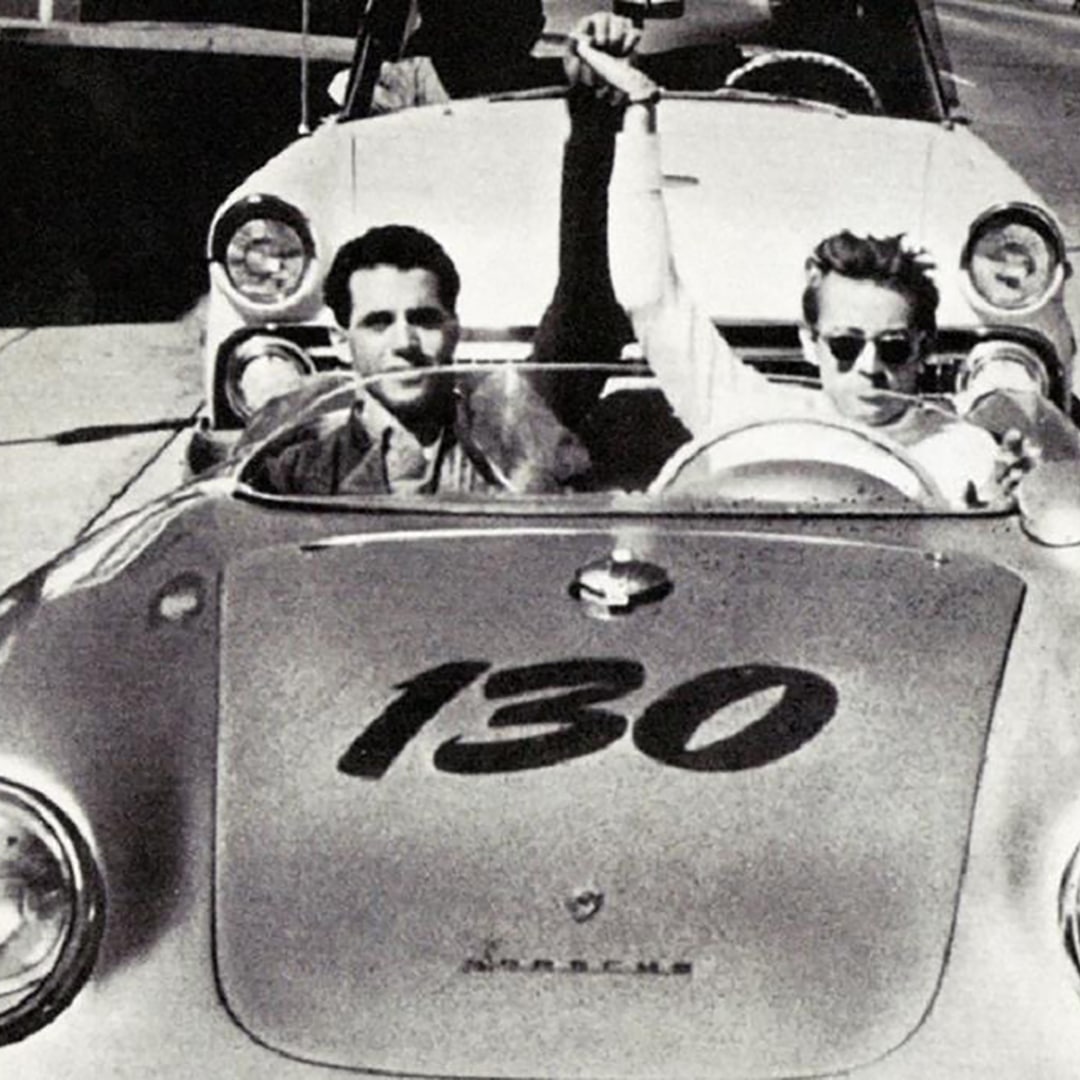
James Dean and the Porsche 550 Spyder Mystery
James Dean found the car aggressive and hard to control. Light, powerful, and unforgiving, he nicknamed it “Little Bastard” on the very first day. From that moment on, the Porsche became part of automotive history.
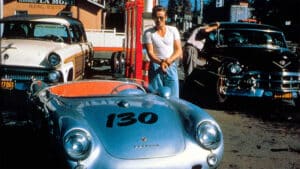
Porsche 550 Spyder and James Dean’s Mystery
James Byron Dean was born on February 8, 1931. By the early 1950s, he had already become a Hollywood star and, at the same time, a passionate speed enthusiast. Like many racing lovers of his generation, he wanted to own the fastest and most exclusive cars available.
His first Porsche was the 356 Speedster, a model that would later inspire the legendary Porsche 911. At the time, the 356 stood out as a true sports car. In fact, it could exceed 220 km/h, an impressive figure for the era.
Because of his growing interest in motorsports, Dean decided to enter a competition in Paso de Robles, California. Initially, he planned to race a Lotus MK10. However, the car failed to arrive on time. As a result, he accepted an offer from his friend George Barris to drive a Porsche 550 Spyder convertible, one of only 90 units ever produced.
The Porsche 550 Spyder
The Porsche 550 Spyder was a compact, rear-wheel-drive, two-seat sports car. Moreover, its open-roof design gave rise to the famous “Spyder” name. Porsche engineered the car specifically for racing, prioritizing lightness, balance, and aerodynamics.
The vehicle delivered 110 hp (DIN) and 121 Nm of torque. Thanks to this setup, it could reach 220 km/h (137 mph). Additionally, its naturally aspirated, air-cooled 1.5-liter four-cylinder boxer engine relied on dual Solex carburetors and paired with a 4-speed manual gearbox.
Furthermore, Porsche used numerous aluminum components. As a result, the 550 Spyder weighed only 600 kilograms. This exceptional power-to-weight ratio made it extremely fast and agile. However, the car demanded experienced hands behind the wheel.
The Fatal Accident
At just 24 years old, James Dean had already achieved fame, wealth, and success. On September 30, 1955, he drove along Route 41. Meanwhile, another vehicle approached the intersection with Route 466.
At that point, Dean’s Porsche collided with a Ford Custom Tudor driven by Donald Turnupseed. According to police reports, Dean traveled at approximately 135 km/h at the moment of impact.
The Curse of “Little Bastard”
After the crash, the wrecked Porsche quickly gained a dark reputation. Soon after, George Barris purchased the remains and began sharing stories about strange incidents linked to the car.
According to several accounts, crane cables snapped while unloading the wreckage at Barris’ workshop. Consequently, the falling car severely injured a mechanic, breaking both of his legs. After that incident, Barris decided not to restore the vehicle. Instead, he dismantled it and sold its parts.
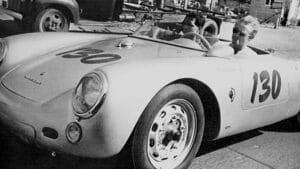
Porsche 550 Spyder and James Dean’s Mystery
Coincidence, myth, or clever marketing?
The engine went to Dr. Troy McHenry, who later died in a crash after hitting a tree. Another doctor, William Eschrid, bought the gearbox and suffered serious injuries during a race accident.
One thief reportedly lost an arm while trying to steal the steering wheel. During a tour across the United States, more incidents occurred. In Sacramento, part of the Porsche fell and injured a student, breaking his hip.
After the tour ended, the remaining parts of Little Bastard disappeared forever. No one has seen them since.
Porsche 550 Spyder and James Dean’s Mystery
Coincidence, myth, or clever marketing?
The engine went to Dr. Troy McHenry, who installed it in his own Porsche. Tragically, he later died after crashing into a tree. Meanwhile, another doctor, William Eschrid, purchased the gearbox and suffered serious injuries after going off track during a race.
Additionally, one thief reportedly lost an arm while attempting to steal the steering wheel. During a tour across the United States, even more incidents occurred. For example, in Sacramento, part of the Porsche fell and injured a student, breaking his hip.
Finally, after the nationwide tour ended, the remaining parts of Little Bastard disappeared forever. Since then, no one has seen them again.
A Warning That Should Have Been Heard
Shortly before the race, British actor Alec Guinness warned James Dean about the car. Years later, he recalled their conversation:
“What is the speed of the Porsche?”
“It reaches 240 kilometers per hour.”
“If you race that car,” Guinness replied, “you’ll be dead next week. Please don’t do it.”
Frequently Asked Questions (FAQ)
✅ What car did James Dean die driving?
➡️ James Dean was driving a Porsche 550 Spyder, which he nicknamed Little Bastard, at the time of the accident.
✅ Why was the Porsche 550 Spyder called “Little Bastard”?
➡️ James Dean gave the car this nickname due to its aggressive behavior, lightweight construction, and difficult handling at high speeds.
✅ How many Porsche 550 Spyders were made?
➡️ Porsche produced only about 90 units, which makes the 550 Spyder one of the rarest Porsche models.
✅ Why is the Porsche 550 Spyder considered cursed?
➡️ After James Dean’s accident, several incidents involving the car’s remains and parts occurred. As a result, legends about the vehicle being cursed began to circulate.
✅ What happened to James Dean’s Porsche 550 Spyder?
➡️ After a nationwide tour displaying the wreckage, the remains of the car mysteriously disappeared and were never recovered.
✅ How fast could the Porsche 550 Spyder go?
➡️ The Porsche 550 Spyder could reach speeds of up to 220 km/h (137 mph), which was extremely fast for its time.

